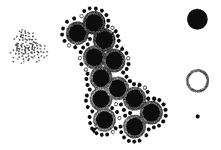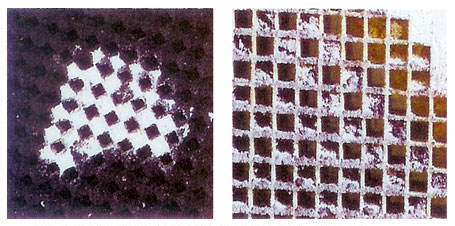|
iFleet fuel catalyst lowers toxic emissions and extends the engine wear curve. This ensures improved combustion over a longer period with a reduced risk of fuel injection failure (which is the leading cause of engine failure in modern engines). Therefore improved emissions are realized through the improved combustion and extension of engine lifecycle. Kyoto protocol -international climate change (CDM) iFleet fuel catalyst reduces two of the Kyoto protocol scheduled
greenhouse gases, namely;
Revised regulations 22.9 (2)(a) - 2006
occupational exposure limits for airborne pollutants. Promulgated
in Government gazette number 29276 of 5 October 2006. Particle limits to be implemented and gazette within the next 12-18 months iFleet fuel catalyst will lower these toxic emissions with no additional cost, but with a nett cost saving.
Assists in complying with Emission legislation and ISO 14001 accreditation. 22.9(2) (a)- 2006 Occupational exposure
limits for airborne pollutants Recent independent laboratory tests at Fleet Africa, based at Johannesburg International Airport, made several findings after a four-month trail period. A 22% reduction of carbon monoxide and carbon dioxide was recorded, nitric oxide reduced by 27%, nitrogen dioxide reduced by 30% and hydrocarbon emissions was reduced by a staggering 57%. The report also stated that the use of the product in indoor environments such as warehouses or mines underground or quarries would reduce the amount of ventilation required and be of great risk benefit to the employee health .The product will assist in meeting the new emission legislation.
The reduction of hydrocarbon emissions is concrete proof of the achievable fuel savings - normally between 5%-7%. 
Exhaust Emisssion
Testing The Eurotype Test Centre facility was established in East London to perform COP testing for DaimlerChrysler SA and BMW SA to enable their export motor vehicles to be tested locally according to international exhaust emission standards. Further research and development testing capability is also being established to cater for local industry in the development of products for the international market. The capability includes raw exhaust gas sampling and modal analysis on both raw and diluted gas samples.
Gas Analysers
|
||||
Copyright iFLEET© 2007
Site design by G-spot






 Reduce
emissions
Reduce
emissions
 Mine
emissions
Mine
emissions With
lower toxic emissions at source, less costly mine ventilation is
required. Economical engine life is extended This will also enhance
air quality over a longer period as diesel will burn more efficiently
over time due to extended engine efficiency curve.
With
lower toxic emissions at source, less costly mine ventilation is
required. Economical engine life is extended This will also enhance
air quality over a longer period as diesel will burn more efficiently
over time due to extended engine efficiency curve.

